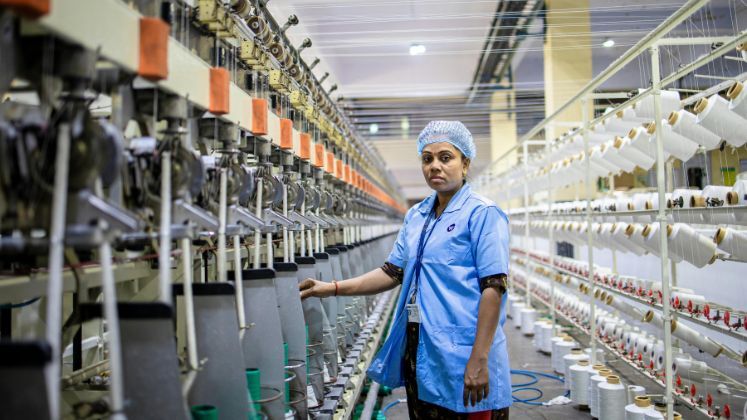India’s major textile-producing states, Gujarat and Maharashtra, are experiencing a severe workforce shortage that is interfering with the region’s ability to produce fabrics and clothing. The industries that require a lot of labour have been especially affected by the workforce reduction. The output of textile factories in Surat, Gujarat’s famous textile hub, has decreased by as much as 50 per cent. Nevertheless, despite a slower supply of textiles, limited retail demand might stop price increases.
Surat is well known for its manual labour-intensive weaving, processing, and clothing industries. The majority of the personnel are from Bihar and Uttar Pradesh, and they usually spend one to two months in their home villages in the summer. Since their pay is output-based rather than permanent, these workers’ absences have a financial impact on them but are out of the factory owners’ control. Many depart to work in agriculture or help with harvesting, where they frequently receive greater seasonal pay.
According to Ashish Gujarati, the former president of the Southern Gujarat Chamber of Commerce & Industry (SGCCI), factories are forced to cut production by as much as 50 per cent due to a workforce shortage in the textile sector. Approximately 50 per cent of the staff is thought to have taken time off to return to their home states. After the first rains, which should happen in the second half of June, workers are anticipated to return. He went on to say that the most acute labour shortages are occurring in auto and power looms. Clothing and textile processing are also impacted. Similar manpower shortages are affecting industries other than textiles.
Production at textile factories has been hampered by a lack of labour, but it is doubtful that supply will abruptly decline or fabric prices will rise. Unless there is an unanticipated spike in demand for completed items like clothing, there are unmistakable indications of steady supply and stable prices. Additionally, wholesalers have accumulated enough inventory for the summer. More significantly, there is currently little to no demand for clothing and textiles, which makes price increases unfavourable.







